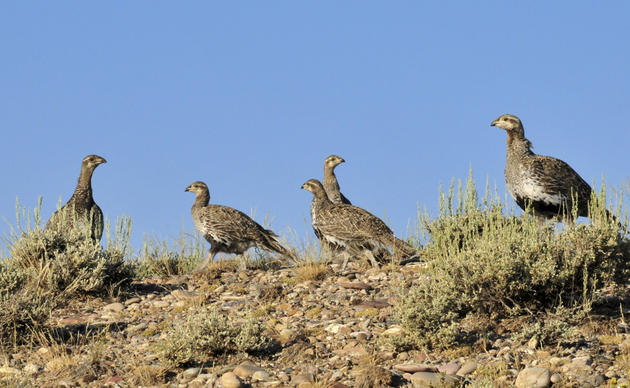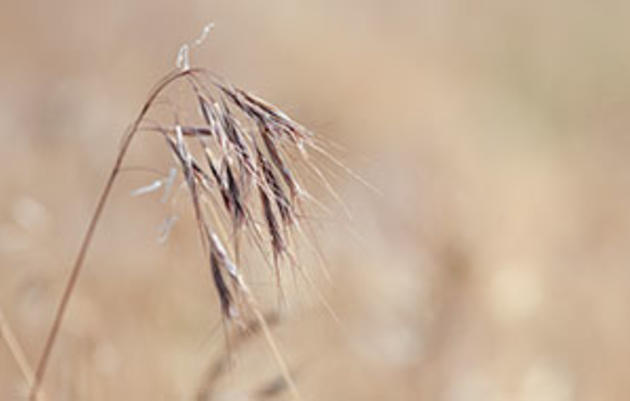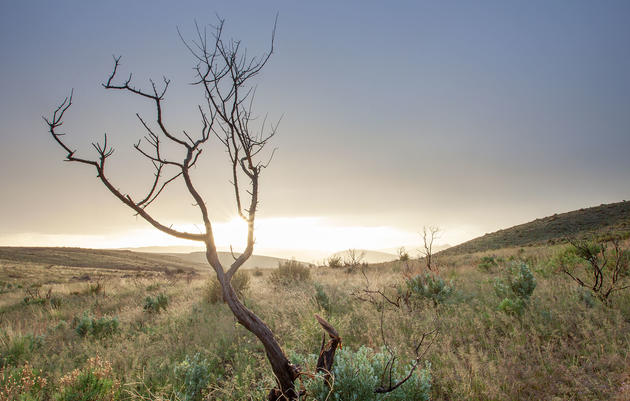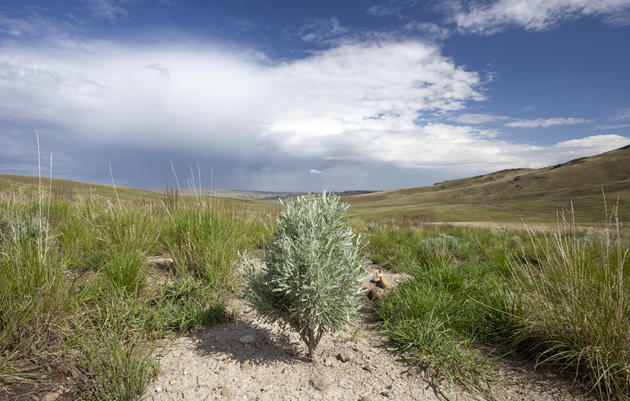Why is Sagebrush Country on Fire?
The webinar “Why is Sagebrush Country on Fire” featured Michele Crist on June 3, 2020, as a product of SageWest, hosted by Audubon and the Intermountain West Joint Venture.
The webinar had a great turnout, with folks ranging from policy-makers, to practitioners in this field, and those who were simply wanting to learn about this serious threat. In that presentation, there were a number of materials referenced and we wanted to provide a list of resources and additional information requested during the webinar
Click here to download a PDF of the webinar slides.
Informative Websites:
- National Invasive Species Information Center is a reference and educational gateway to information, organizations, and services about invasive species.
- U.S. Fish and Wildlife Service’s Invasive Weeds & Wildland Fire - informative website (includes success stories).
- One Less Spark Campaign provides the tools and educational materials to prevent fire, act post-fire, support forest health, and other resources.
- Check out a 5-minute video on invasive annual grasses and fire in sagebrush rangelands and access four actions needed.
Reports/Recommendations:
- Science Framework for Conservation and Restoration of the Sagebrush Biome, Part Two: See the general management strategies for cheatgrass and other invasives annual grasses based on the invasion state in this framework in Part 2, Section 5 and tables 5.1 and 5.2. See Section 4 and tables 4.1 and 4.2 with corresponding figures. See Section 9, pages 193 - 199 and Text Box 9.3 for a management scenario that addresses managing invasive annual grasses and uncharacteristic fire. Table 9.1 includes integrated management considerations across many management types (e.g. vegetation management and grazing) and associated trade-offs.
- Science Framework Part 1 provides the science and framework for using the concepts of resilience and resistance in managing sagebrush ecosystems and Greater sage-grouse habitats.
- Western Weed Action Plan (April 2019) identifies opportunities to overcome these threats through messaging, collaboration, prioritization, data sharing, and increasing capacity to effectively implement cutting-edge, scientifically-based management approaches across the western landscape.
- Wildfire and Invasive Plant Species in the Sagebrush Biome: Challenges that Hinder Current and Future Management and Protection – A Gap Report Update (2018) - produced by a multi-agency Wildfire and Invasive Species Working Group. Includes an overview of remaining work to be accomplished, with recommendations for actions to improve the conservation and management of the sagebrush biome.
- Cheatgrass management handbook: managing an invasive annual grass in the Rocky Mountain region (2013) - Principles discussed also apply to other invasive weeds in natural systems, and readers encouraged to incorporate the strategic management framework into other weed management programs. Serves as a guide to assist land managers and others with developing a cheatgrass management program.
- National Cohesive Wildland Fire Management Strategy (2009) establishes a national vision for wildland fire management, defines three national goals, describes the wildland fire challenges, identifies opportunities to reduce wildfire risks, and establishes national priorities focused on achieving the national goals.
- For the questions about cheatgrass and pinyon-juniper treatments, you can watch this talk called “New Tools for Pinyon-Juniper Management” for the latest knowledge.
Online/Geospatial Tools:
- Rangeland Analysis Platform is an interactive online tool that displays rangeland resources. Publicly available, it's built for landowners, managers, and conservationists to enable tracking vegetation through time.
- Wildlife Probability Dataset
Recent Scientific Publications:
- Invasive grasses increase fire occurrence and frequency across U.S. ecoregions (2019) - Analysis of 12 invasive grasses documents regional-scale alteration of fire regimes for 8 species, which are already increasing fire occurrence by up to 230% and fire frequency by up to 150%.
- The ecological uncertainty of wildfire fuel breaks: examples from the sagebrush steppe (2019) - research paper looks at fuel breaks in the Great Basin.
Private lands invasive annual grasses resources:
- 1st step: Contact your local county weed district or ag extension agent. There are significant resources available to address invasive weeds specific to your area and they will have information about all of them.
- Visit this directory of conservation districts. Conservation districts are units of local government designed to help citizens conserve their soil, water, and other renewable natural resources.
- The Natural Resources Conservation Service is dedicated to working with landowners on their agricultural operations. They have a variety of programs that offer financial and technical assistance to help eligible farmers, ranchers, and forest landowners conserve the nation's soil, water, air, and other natural resources. See their Cheatgrass Challenge page.
- The Partners for Fish and Wildlife Program of the USFWS provides technical and financial assistance to private landowners to restore or enhance fish and wildlife habitats for the benefit of Federal Trust Species.
Wildlife-Related:
- Presentation (2015): Landscape Perspective on Invasive Plants and Sage-Grouse by Jeremy Maestas/NRCS
- NIFC: Rangeland Fire and Sage-Grouse
- Effects of Prescribed Fire on Wildlife and Wildlife Habitat in Selected Ecosystems of North America, 2016 Technical Review by The Wildlife Society - see pages 23-24
- Disturbance shapes avian communities on a grassland–sagebrush ecotone (2018), Duchardt et al.
- Wildfire, climate, and invasive grass interactions negatively impact an indicator species by reshaping sagebrush ecosystems (2016), Coates et al.
- Fire Mediated Patterns of Population Densities in Mountain Big Sagebrush Bird Communities (2013), Holmes and Robinson.
- The Conservation Strategy for Pinyon Jay (2020) includes info managing juniper and pinyon avian habitat and sagebrush avian habitat from an invasives perspective as well.
Related
Cheatgrass Management Handbook
Managing an invasive annual grass in the Rocky Mountain region,
Cheatgrass, Fire, and Sagebrush
How cheatgrass and other invasives are threatening the very existence of the sagebrush steppe ecosystem.
After the Smoke Clears
An interview with Ann Moser, a wildlife staff biologist with Idaho Fish and Game, on sagebrush restoration after the Soda Fire.







